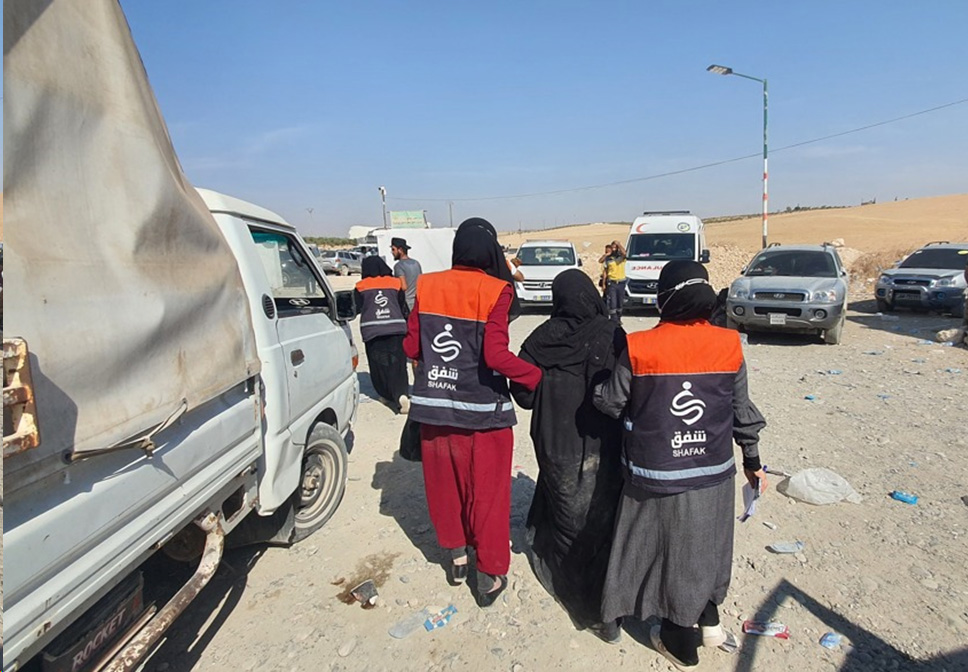
When Abbas* arrived in Lebanon in 2014 he was in his mid-20s, seeking safety and work away from the conflict in Syria.
At the Aoun al-Dadat crossing, health partners provide psychosocial support to help families – especially women and children – feel safe. Photo credit: Shafak Organization“I went alone, hoping to find a better life,” he says.
For nearly a decade Abbas managed to build a life, finding occasional work, marrying and having 4 children. By September 2024, however, the escalating violence in Lebanon left his family with no choice but to return to northwest Syria.
“We were renting a small apartment, and the financial situation was becoming unbearable,” Abbas says. “I was the only one working, and expenses kept piling up with four children. Then the shelling started. Every night, we had to evacuate to safer areas, only to return in the morning.”
After a week of constant fear, Abbas and his wife decided they had no choice but to leave. “We tried moving to a different neighborhood, but even there, the shelling continued. My children couldn’t sleep; they were terrified. That’s when we realized it was time to return to Syria.”
For many families like Abbas’s, the decision to return is not made lightly. It is often a last resort, driven by the worsening conditions in Lebanon. Northwest Syria remains unstable, offering limited resources and safety, but families are left with no other choice as they try to rebuild their lives.